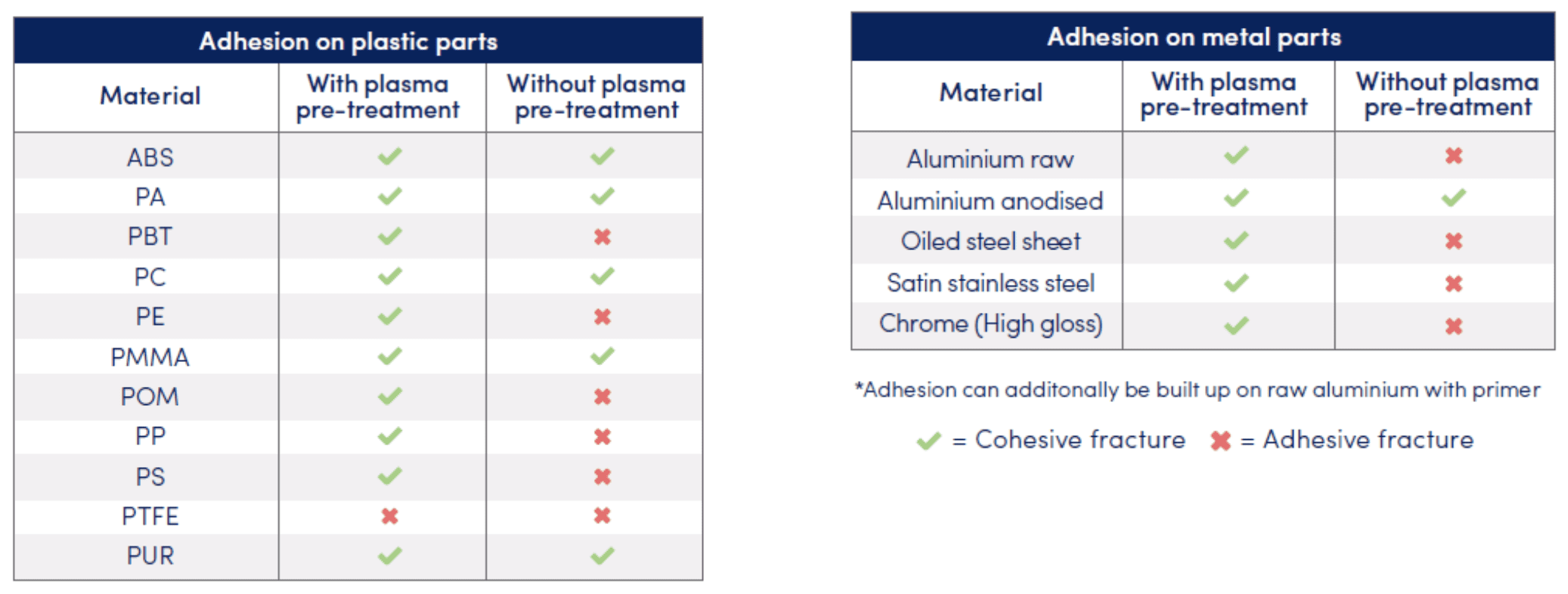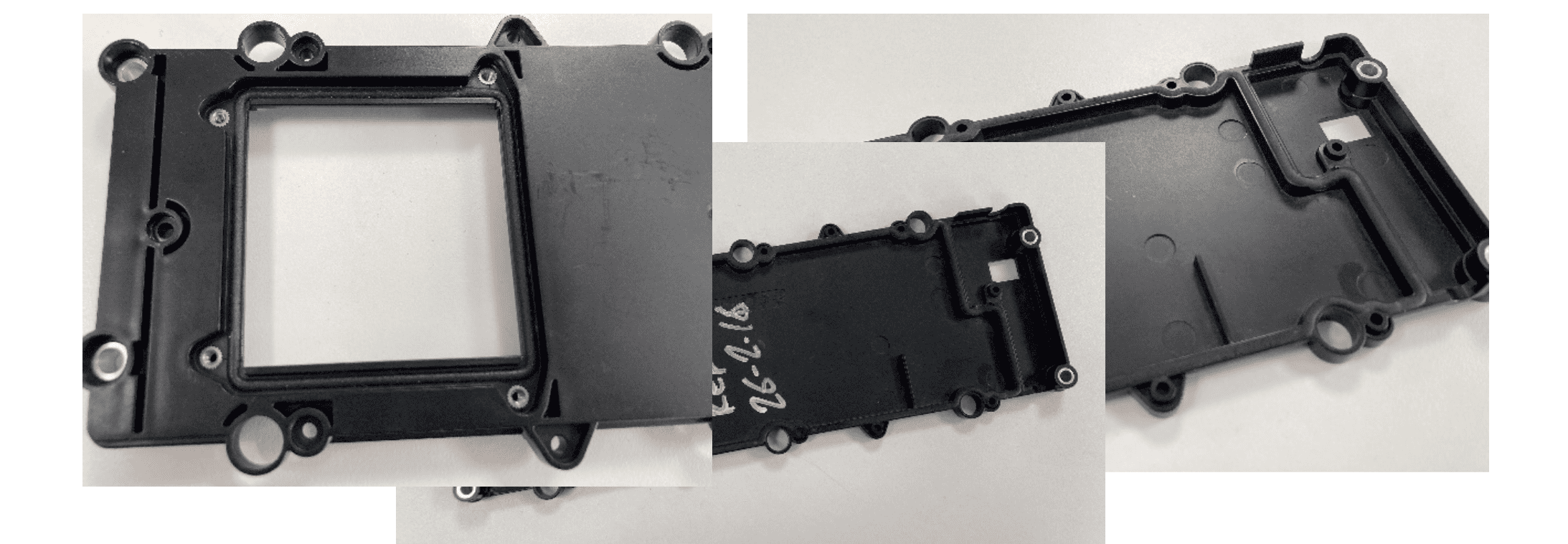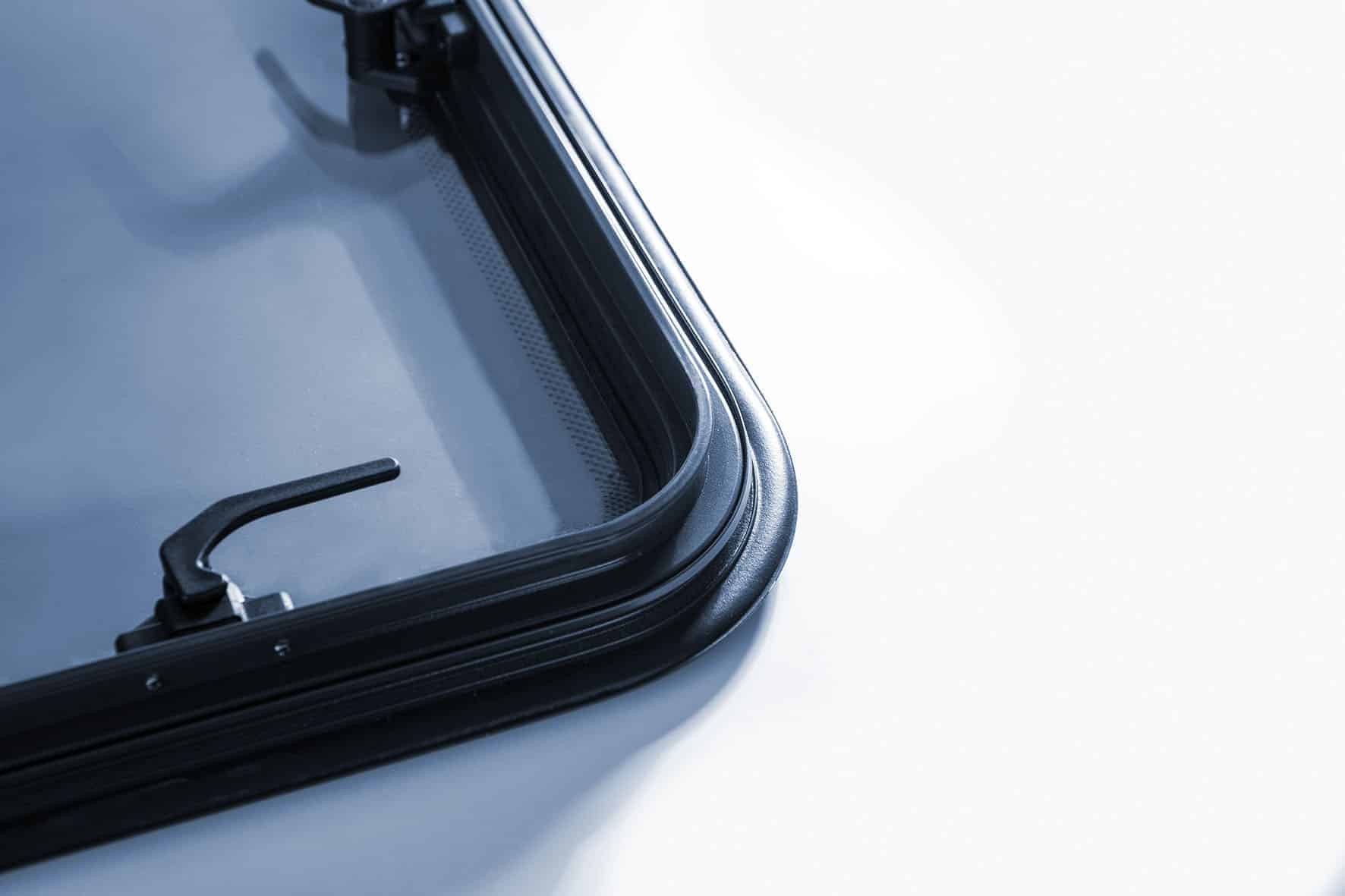One of the most frequent questions we get asked when speaking to potential customers is ‘Will the foam stick to our part?’. The short answer is yes, but it may take some other processes before achieving a suitable adhesion. Some substrates have a natural adhesion and therefore don’t require additional interference. If there isn’t a natural adhesion then there’s usually something we can do to achieve it. In this blog post, we will discuss adhesion further and look at a previous example of when Robafoam has overcome difficulty with adhesion.
The adhesion of the Robafoam seals to a component’s surface is dependent on the surface energy of the material or the surface treatment in question, as well as any possible contamination of the surface. Different material surfaces exhibit different levels of natural adhesion depending on their surface energy. Surface energy is measured in Dyne/cm2 and the optimal value for adhesion with our foam products is 50 Dyne/cm2.
One way to change the surface energy, to ensure the adhesion of the foam, is through the application of ‘atmospheric plasma’. All our 6 axis robots are equipped with a plasma system to use with our Contract Gasketing customers. The application of plasma is part of the same process, carried out just before the foam bead is applied. Below is a table that shows how the use of plasma changes the adhesion to substrates that our foam doesn’t normally have a natural adhesion to.

Another way of increasing adhesion is by using liquid surface primers. By increasing the ‘wetting’ of the foam to the surface part, adhesion can be improved, however, this may compromise the height of the bead as the foam has an affinity with the surface and wants to spread.
Case Study – Airline smart trolley latch – Security seal
In 2016, a company that had developed a product to overcome security difficulties with airline trolleys approached us to apply a seal to their part. The part (as pictured below) was a complex double-faced, 3D part, made of polycarbonate material and was the outside case which enclosed a number of electrical components as well as a GPS system.

The airline trolleys (holding food and gifts) are usually delivered with a security tab attached to the opening latch, which is removed by airline staff when setting up the plane. After some testing, these tabs were found to be very easy to open by non-airline staff, who could change the contents and apply a new security tab. The ability to plant an item on these trolleys that don’t require to go through security measures obviously then compromises the safety of the aeroplane. A new product was developed which held a smart security seal, allowing the trolley to be connected to electronic keys held by airline staff and therefore ensuring others are unable to open the trolley.
The part was brought to us during the prototype stage and required a IP69K rating, which means that the seal needed to withstand being sprayed by high-pressure water at point-blank conditions. When applying the foam to the prototypes, there was a natural adhesion to the samples and the testing all went smoothly and achieved the required IP rating. The product then moved onto production, and we received the first production parts to seal, however, we found all the foam gaskets we applied began to peel off. After much discussion with the customer, we realised that a fire-retardant additive, which had been added by the injection moulding company to the final production parts but not the initial prototypes, was causing a change in the Dyne/cm2 value of the part and therefore affecting the adhesion. Once plasma was incorporated into the process of the seal, all was solved and the parts were retested and able to be used.
This instance is one of many examples where Robafoam have had to adjust its processing to ensure a suitable adhesion to a part we have received. Plastic parts in particular can be made of varying percentages of materials, which can all have an impact on the adhesion of our foam. Recyclable parts, for example, are often required to be made with recycled content too, all in varying percentages. If we don’t know the percentage of recycled content, the best way to overcome adhesion difficulties is for us to test it.
What the product is made of is only one element that can affect adhesion. As previously mentioned, the contamination of a part can also impact its levels of adhesion. Airborne contaminants, such as working in an oily environment, can mean the foam won’t stick to the part. Plasma has a cleaning effect to a degree and can improve adhesion, but there may need to be other processes implemented to provide an adequate seal.
Plasma also has less impact on other substrates, including glass and stainless steel. In these cases, other options may need to be considered. When using raw aluminium, anodising can be used as this has the ability to increase adhesion too.
In summary, our 30 years of experience in the sealing and adhesive industry means we have a range of options and solutions available to you and are here to help. If you require some advice or wish to work with us to help develop a seal on your part, please get in touch.

